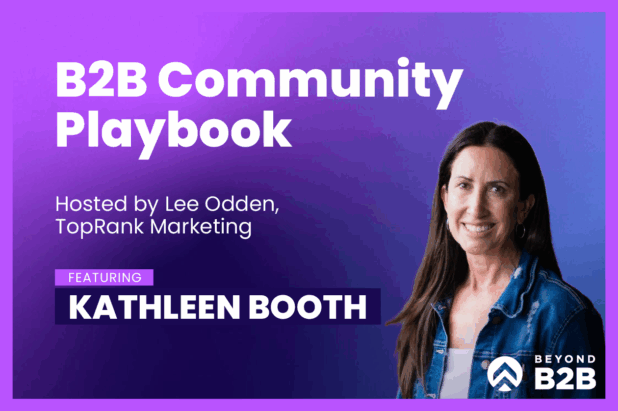Tim Ash is a marketing machine. He writes a blog, contributes to Search Engine Watch, hosts a weekly show on WebmasterRadio.fm, is author of the book “Landing Page Optimization”, speaks at numerous conferences and is the chair of the upcoming Conversion Conference in May.
Oh, and he also runs SiteTuners, a successful landing page optimization consulting business and has launched a new tool called AttentionWizard that offers eye tracking “without the eyes”.
Tim has worked with American Express, Sony Music, American Honda, Coach, COMP USA and many other major brands.
“Landing page testing is the best accelerator of your business that you have available.”
Tim is a very smart and very nice guy who took a few rare moments of time to answer a few questions about measuring social media ROI, budgets for testing, common mistakes, tips, tools and how he stays current in such a fast paced and changing field.
Please tell us about your background, your business, and the book?
I am a recovering technologist. I almost got my PhD in computer science, but dropped out to start my first Internet consulting business. Over the years we have focused on driving traffic. But after a while it became clear that the bigger problem (and business opportunity for us) was to improve the efficiency of that traffic once it landed on the website or landing page. That’s how SiteTuners was born. We offer a range of consulting services to improve conversion, full-service landing page tests in which we guarantee performance improvement, and software such as out cutting-edge TuningEngine testing software, and the AttentionWizard visual attention prediction tool. We work with some of the biggest companies in the Internet universe, as well as scrappy smaller companies.
I wrote the Landing Page Optimization book a couple of years ago and it has been very well received. Wiley Press has asked me to write a second edition that I am co-authoring with Rich Page and Maura Ginty. It will be out early next year and will have over 150 pages of completely new content.
There’s a lot of speculation about social media and measuring ROI. Do you have examples where conversions were improved from content on a social network or other social media site as a result of a/b or multivariate testing? What is significantly different about measuring social media marketing efforts versus search marketing where the goals are conversions?
The fundamental principles are the same – you should be trying to increase the efficiency of conversion actions that have a measurable impact on your business. The only difference is that the conversion actions might not be sales, but rather “micro conversions” such as re-tweets, fan page sign-ups, or visits to blog or content pages that you are trying to promote. So if you can lower your cost-per-acquisition for any of those actions, that is good. What makes testing a bit more tricky to conduct in a social media setting is that you need steady traffic sources over an extended period of time. Unfortunately much of social media happens very quickly and results in one-time traffic spikes that go away.
The type of social media marketing executed by many SEOs does seem to behave according to the “go hot” principle where content gets voted on and attracts spikes in traffic. However, many companies are building networks on social channels and community participation often drives more steady streams of traffic according to the content publishing schedule of the brand. When it comes to measuring social ROI, are you seeing more social media marketing efforts fall in the first situation versus the second?
Many social media programs are based on “go hot” kinds of activities. The content is often “perishable” and time-sensitive. But there is also long-term “content farming” activities which continue to add to a pool of general company awareness through creation of new content pages on the website, whitepapers, blog posts, and media placements. This takes a more disciplined approach and a long-term commitment of resources, so in our experience is more rare.
This is one of those “it depends” questions but let’s give it a shot. Is it your experience that most marketers allocate budget for testing as part of overall web analytics? What percentage of that budget should go towards ongoing testing for say, an ecommerce site? What advice do you have for getting more approved?
Landing page or conversion rate optimization is not a part of Web analytics. It is a top-line revenue-growing activity. How much would you pay for a 5% increase in volume? 10%? 50%? Landing page testing is the best accelerator of your business that you have available. It should not have a fixed budget. The economically rational thing to do with any marketing activity is to keep spending money on it as long as it produces a positive ROI. Setting fixed budgets is the same kind of silly logic that some companies use when driving traffic. If you have a fixed pay-per-click budget and you could buy more profitable traffic above that threshold, you are just throwing profits away.
It’s interesting that you say that when it comes to budget allocation, since both concern measuring and improving web site performance. Of course there are many things that make sense to a consultant or service provider that don’t necessarily fit with the reality of how companies forecast their marketing budgets. Have you been successful at winning more budget with the “keep spending money on it as long as it produces a positive ROI” argument or do you only work with companies that have more flexibility with where they spend?
Technically landing page testing is part of measurement and Web analytics should always be actionable. Unfortunately often it is just looking in the rear-view mirror at things that have happened in the past. My friend Jim Sterne insists that all Web analytics should be forward looking and actionable, otherwise it is useless. But in practice most analysts spend more time on data mining and not on landing page testing. If you have a testing mindset, then the question you continually ask is “Where can I make the biggest impact on our business by tweaking a mission-critical step in our value creation chain?” If you do that, the resulting improvements should make the business a big pile of money and will create psychological momentum inside of your company for further testing and experimentation. Once an organization gets excited and buys into this continual-improvement mentality, the testing budget question often goes away.
What are some of the most common mistakes experienced search marketers make when it comes to landing pages? Top 5?
That’s easy – I can give you more than 5. If you have heard my “Seven Deadly Sins of Landing Page Design” presentation, you know that there are seven common types of mistakes on all landing pages: unclear calls-to-action, too many choices, asking for too much information early in the process, too much text, not maintaining continuity with the expectations that were set upstream of the actual landing page, visual clutter and distraction, and lack of trust and credibility.
What tools do you recommend (in addition to Google Website Optimizer and those at SiteTuners like AttentionWizard) for corporate marketers that are still fairly new to conversion rate improvement? Advanced tools?
There are a number of tools that have come out in just the last couple of years that make it much easier to diagnose and correct conversion issues. These include ClickTale.com, CrazyEgg.com, UserTesting.com, and CrossBrowserTesting.com.
How do you stay current with practices? Do you have favorite conferences, books, blogs, newsletters or other resources that you rely on?
Wow – that’s tough. There is an explosion of resources around landing page optimization. I pay attention to Bryan Eisenberg, Avinash Kaushik, Anne Holland, and try to look for interesting resources through Twitter tags like #lpo, #cro, and #measure. Conferences like Search Engine Strategies, eMetrics, and PubCon always feature solid content on the topic.
Conversion Conference is coming up soon (May 4-5 in San Jose) with some big names in the conversion and testing space including Bryan Eisenberg, Jakob Nielsen, and yourself. Who is the conference for and why should they come? What prompted you to start it?
I created the new ConversionConference.com series to give conversion improvement it’s own home. Until now, conversion has been a side topic at conferences that focused on driving traffic. The first event will be in San Jose next month, and then in Washington DC in the fall. There is also a German show in Hamburg, and other international shows on the drawing boards. The San Jose show will feature three dynamic keynotes that you mentioned. There will also be twenty six fast-paced sessions over two days covering all aspects of conversion. The presenters are all top notch. The show is held in parallel with eMetrics and will share the expo hall, lunches, networking events and the Conversion Bash party put on by WebmasterRadio.fm. The top conversion tools and services companies will also be there. If you want to turbocharge your online marketing you should be there.
By the way, your readers can use an exclusive promo-code “CCW562” for an additional $100 off of the early bird rate if they register by April 15th.
Thanks Tim. You can connect with Tim Ash on the social web at:




